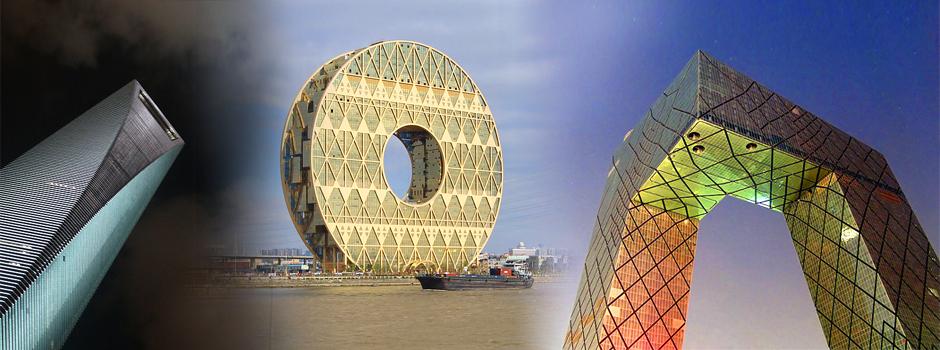A bird's nest, a coin and a pair of pants are among some of the most famous architectural landmarks added to Chinese city skylines in recent years.
However, Chinese President Xi Jinping's recent lamentation of the rise of "weird" architecture in China has left the future of headline-grabbing structures in the balance, and architects, academics and journalists scrambling to define the parameters of this so-called weirdness.
In a talk at NYU Shanghai on October 26, Dr Cole Roskam, associate professor of architectural history and theory at the University of Hong Kong, presented a history of projects built and proposed in China over the course of the 20th and early 21st centuries, and proposed a preliminary theorization of weirdness in relation to Chinese architecture.
Basing his understanding of weirdness on the three general conditions laid out by Xi himself, namely the loss of some intangible sense of Chineseness in contemporary Chinese architectural production, the emphasis on oversized monumentality, and the sense of excess on display, Roskam traced the evolution of Chinese architecture from the ordered imperial cities, which emphasised regularity, to modern structures lauded for their ‘Chineseness’.
Drawing on examples ranging from the great exhibition halls of the 1980s, such as the Shanghai Center; projects from the 1990s that sought to incorporate a localised form, such as the Shanghai Museum and Jin Mao Tower; and the gravity-defying CCTV headquarters in Beijing completed in 2006, Roskam argues that an architectural history of weirdness in 20th century and contemporary China “directs our attention to the interplay of order and disorder ever present in the Chinese state.”
“Ultimately, evidence of architectural deviance in China, points to the uncertainty at the heart of modern architectural representation, and the notion that a distinctly national style both exists and is achievable,” Roskam said.
He cautioned against the rush to canonize certain projects such as the Ningbo Historic Museum as ‘good’ Chinese architecture warning that it “reinforced the stubborn belief that some undetermined latent Chinese values lie embedded in certain architectural projects but not others.”
“Weird architecture,” Roskam concludes, “is exciting insofar as it offers the potential to destabilize how we understand the expanded field of Chinese architectural production today while leading us to the social and political agency of architectural expression itself.”
---
Cole Roskam is associate professor of architectural history and theory in the Department of Architecture at the University of Hong Kong. His focuses his research on architecture's role in mediating moments of transnational interaction and exchange between China and other parts of the world. He is currently working on a book-length project that examines China’s architectural culture before and during the country’s early reform era (1978-1990).
Dr. Roskam was introduced by Dean Of Arts Of Sciences Professor Maria Montoya.



